
DIDLINGTON DOODLES
Quite Simply the Best!
(Well We Think So Anyway!)
Please Scroll Down
LABRADOODLE INFORMATION
THE 'F' WORD, COAT TYPES, MAINTENANCE
APPEARANCE


Digby - F3B
LABRADOODLE GENERATIONS, COAT TYPES, MAINTENANCE & APPEARANCE
What on Earth is an F1 or F2 or Even an F2B Labradoodle?
Are you confused by the 'F' Word? Many people get confused by Labradoodle generationa and it's not surprising! The Labradoodle generations are determined by F1, F2, F3 etc., so let me explain!
A first generation Labradoodle is known as an F1 - this is the product of mating a Labrador Retreiver with a Standard or Miniature Poodle. As first generation hybrids, these dogs are believed to have the added health benefits associated with hybrid vigour. It is believed in animal breeding that the first cross between two unrelated purebred lines is healthier and grows better than either parent line - I am not 100% convinced tht this is true which is why it is so important to health test the parents for the problems associated with their breed. ie: Labradors can have hip problems, miniature poodles can have problems with their eyes, standard poodles also suffer hip displacia etc. As you have seen on the previous page the coat type on the F1's can vary considerably, but is generally described as scruffy! This also changes a lot during the first year - so you can have a fairly smooth puppy at 8 weeks and by the time your pup is a year old its coat has developed and it can be really scruffy!!
An F2 Labradoodle is often the result of a mating between two F1 Labradoodles. In this instance the resulting F2 puppies are generally the least uniform of all the crosses and the coat and appearance of each pup can vary considerably.
F2's are also produced by mating an F1 with an F3 or 4 etc., this is because one of the parents is an F1, the puppies generation can only move up one place and they will thus be F2's. An F2 produced by mating an F1 with an F3 or F4 will generally have a 'better' coat, than that of an F1 x F1. An F1B/F2B/F3B etc Labradoodle is the result of an F1 (or F2 or F3 etc) Labraadoodle parent being mated by either a Poodle or Labrador - this is usually a Poodle and is done to improve the coat quality (ie: to make it more curly, less shedding).
An F1B/F2B/F3B etc Labradoodle is the result of an F1 (or F2 or F3 etc) Labradoodle parent being mated by either a Poodle or Labrador - this is usually a Poodle and is done to improve the coat quality (ie: to make it more curly, less shedding).
There is a lot of discussion about what is a Multi-Generation Labradoodle - generally this refers to the Australian Labradoodle which has been bred for many generations and with three different breeds used in the breeding programme. It is thought to be sixth generation onwards. In the Uk a Multi-Gen is often referred to as any fourth generation Labradoodle or above.
Different Coat Types:
There are three types of coats for the Labradoodle.
The first is the 'hair coat'. This is the coat often found in the F1 and F2 Labradoodle and can range from being flat and straight, to being wavy or curly. It can range from being slick like the coat of a labrador, have feathering on the tail, legs and face, or be wavy all over. It will often shed in varying degrees and is not the desirable coat type for those suffering with allergies. Many people however, like this 'look' which is often described as the 'scruffy' Labradoodle coat! The pups in a litter of this type can all be different and the coat type is unpredictable - rather fun not knowing what you are going to get! This is the easiest coat to cope with, but will still need regular brushing and care.
The second coat type is the 'fleece coat' (see pics above) which is rather like that of an angora goat. It is a single coat, soft and curly and should not shed very much. This coat requires regular brushing and a visit to the groomer approximately every 8 to 10 weeks depending on the coat density. I would regard it as a fairly high maintenance coat.
Finally the 'wool coat' is very similar to the coat of a pure bred poodle and is non-shedding. The coat is dense and thick, sometimes with dense thick curls that are usually not as tight as a pure bred poodle coat. This is a very high maintenance coat - it will require daily brushing and regular visits to the groomer, approximately once every 6 to 8 weeks.
The coat length:
The length of the Labradoodle coat should be between 4 to 6 inches, with colours that include cream. chalk, apricot, coffee, red, gold and café-au-lait, and more recently the parti-colours (ie: black and white, brown and white etc) however most Labradoodles are either black or golden tan as these are the most dominant colour genes.
Coat Maintenance:
As already mentioned apart from the hair coat most Labradoodles need to go to the Dog Groomer to be trimmed/clipped approximately every eight to ten weeks - this depends on the coat thickness and the manageability of the coat and will vary from dog to dog. Labradoodles with a fleece or wool coat will need regular grooming, whereas the those with a hair coat will need a little less care. A visit to the dog groomer is a good idea in any case as the hair inside the Labradoodles ears needs to be plucked on a regular basis to prevent a build up of wax etc., which can cause problems and his nails will also need to be clipped.


Both the above Labradoodles are F1's - they are 50% Poodle and 50% Labrador - both these coats will moult but generally not as much as a Labrador
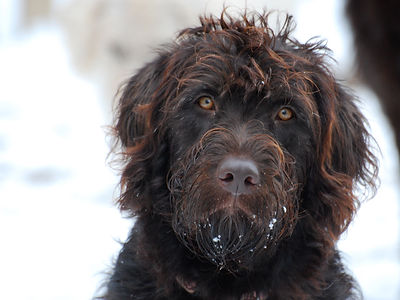
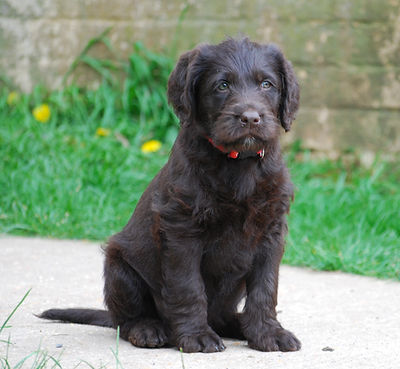
The pup on the right is also an F1 with what looks like a smoother coat - some pups will stay smooth but most of their coats will develop as they mature - by the time they are adult they can have very 'scruffy' coats. The picture above is the same puppy as a mature dog
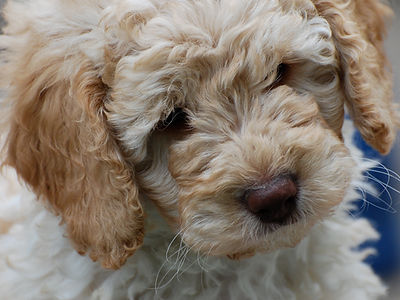

Both these pups have fleece coats and are F1B's they will end up silky/wavy coated and will shed very little
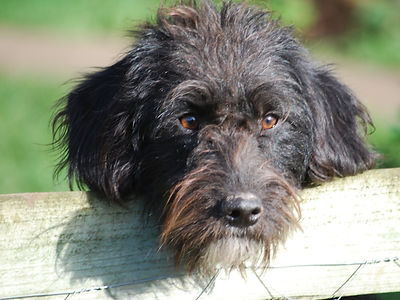
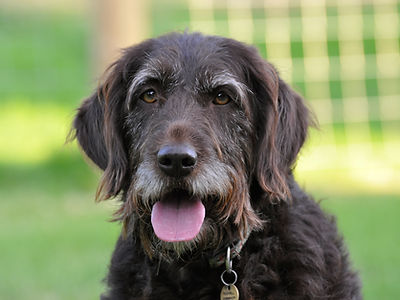
Both Binka (Left) and Keisha (Right) have hair coats. They are low maintenance, high shedding, scruffy coats
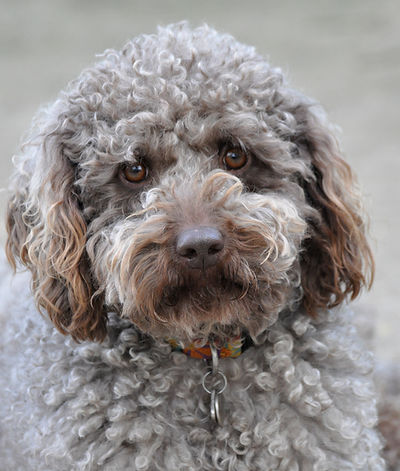
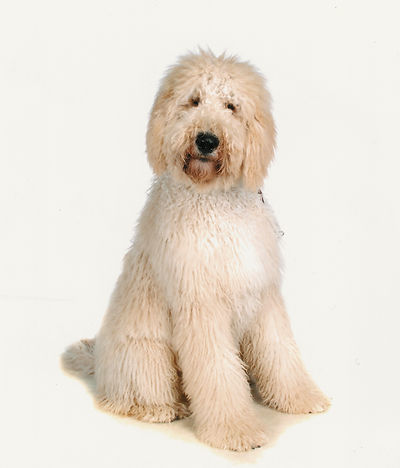
Both these Labradoodles have wool coats. They require a high degree of maintenance, but should be very low shedding a suitable for certain allergy sufferers
PLEASE NOTE!
All the photo's on this website are owned by Didlington Doodles and no one has the right to reproduce or use them without prior permission!
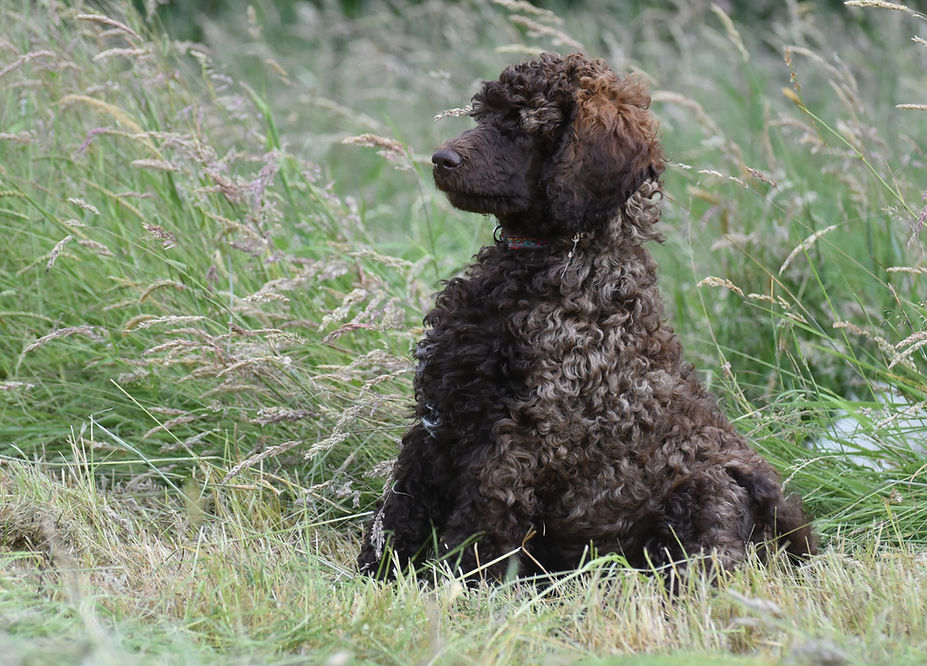
Kaiya - Standard Poodle

Yoshka - F1BB Labradoodle